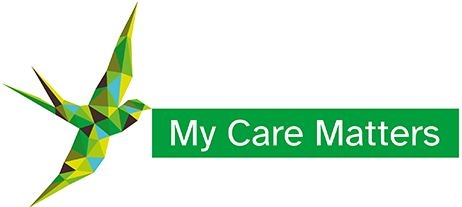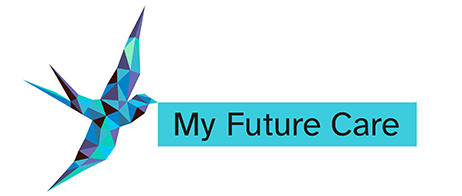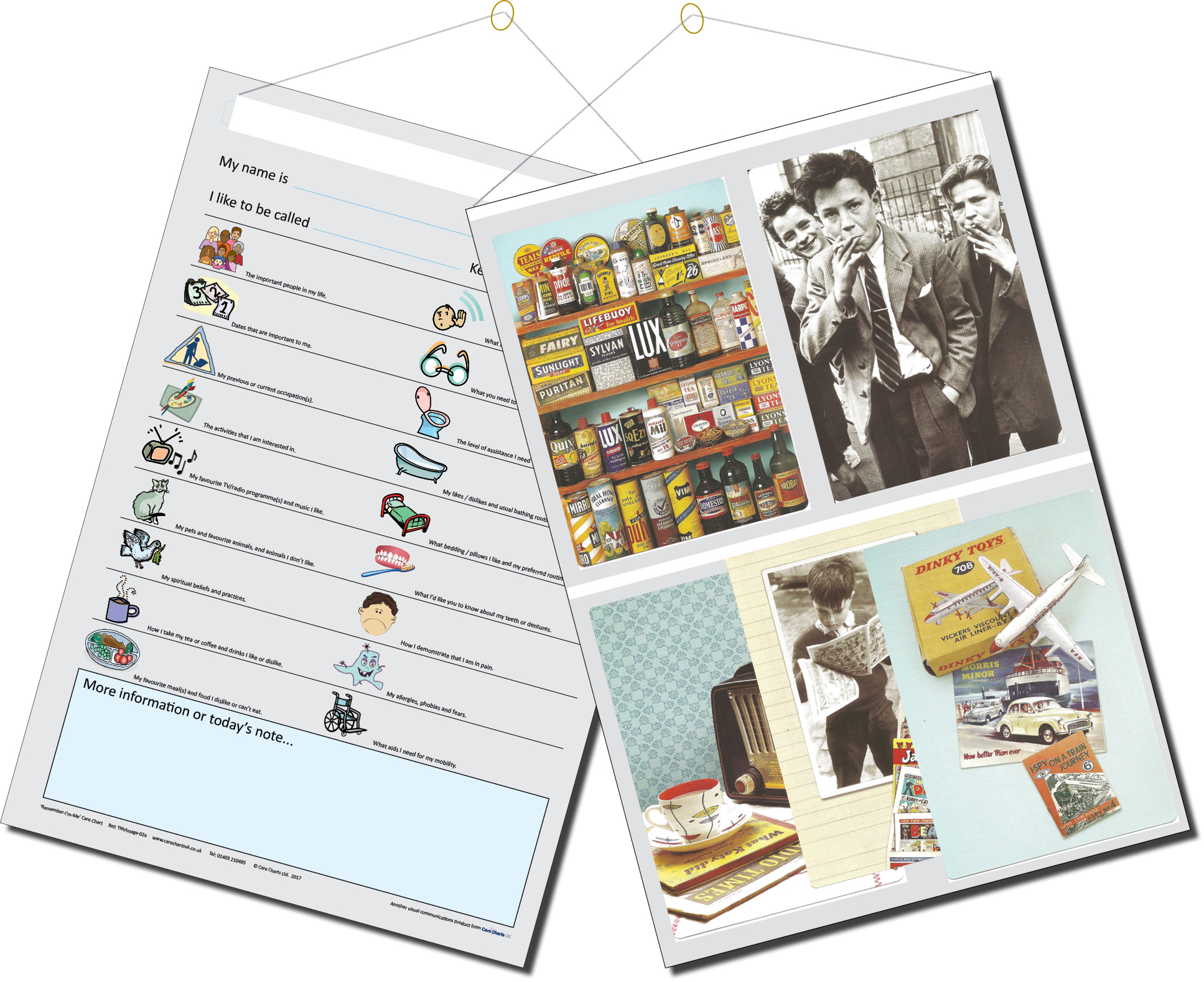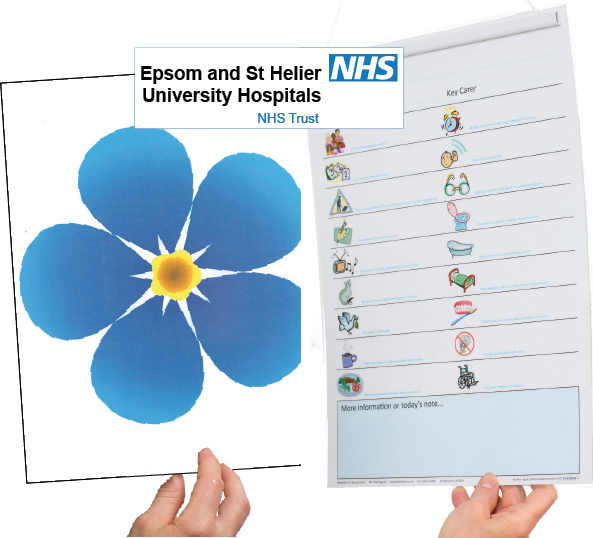“I couldn’t possibly have hoped for a better result,” said Sue Cook, the Older Persons Assessment and Liaison for Dementia (OPAL) team leader at Epsom Hospital, part of Epsom and St Helier University Hospitals NHS Trust.
We were meeting after their three month trial of the Twist-N-View Display Chart, which they are using to assist in the care of patients with a dementia diagnosis. They have chosen to insert a picture of a forget-me-not into the clear front pocket of the Care Chart, and have included the charts in their training programme so everyone from porters to consultants is aware of the significance of the bright blue flower, and that information about a patient can be found on the reverse.
“I was concerned that staff would see it as yet another task to be completed,” Sue continued. But very soon after the charts were introduced and families were encouraged to complete a chart for their relative, the positive comments started to flow.
“Nursing staff realised that the charts gave them the ability to engage much more quickly with a patient who might not be able to communicate reliably,” said Sue, “because information is immediately available to them, and it gives non-nursing staff like porters an opportunity to open a conversation with the patient, when before they wouldn’t have access to simple information like their favourite foods, or important people in their lives, what they do or did for a living.”
“We had one lady,” Sue continued, “who had nobody in the world, friend or family, and the only piece of information we managed to find out was that she had a cat called Penny. So that went on the chart, and it gave everyone interacting with her something they could talk about. And we sang happy birthday to another patient, because we saw his date of birth on his care chart. Of course, everyone’s date of birth is on their records, but that’s just seen as a bit of admin, whereas something written on the care chart is about the person, a reminder that, even if they can’t speak or do anything for themselves, they have history, family, things they love and hate, like the rest of us.”
The hospital is now rolling the charts out to more wards, with the ultimate aim of incorporating Care Charts into the daily life of every ward across the Trust.
Read about how Epsom Hospital is adopting care charts and other innovations to better care for people with dementia. Epsom Hospital News
To read about the results of trials in community hospitals click here.



